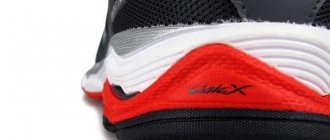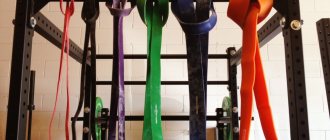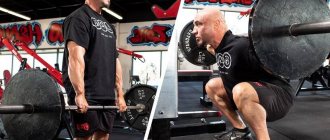Insulation layer
After the base layer comes the so-called insulating middle layer. It is designed to make running at temperatures below -10oC comfortable and ensure the proper level of air circulation. Thanks to the latter, the sweat released during a run is immediately “dried”, and the body temperature is maintained at an optimal level without hypothermia.
Thermal underwear is usually worn as an insulating layer that prevents a sharp increase or decrease in body temperature. It can be made of fine wool or synthetic fabric. A product made from natural wool is preferable. Along with its lightness, this material has antibacterial properties.
The principle of multi-layering
Sets of clothes for running in winter are made according to the principle of multi-layering. The three layer rule is used:
- 1st layer - its task is to remove moisture. For the first layer, thin clothing is used from special fabrics that allow the skin to breathe and wick sweat to the second layer of clothing. This prevents the body from becoming overcooled and prevents the growth of bacteria on the skin. During sports activities, a person actively sweats, and if the first layer is neglected, the clothes will quickly become soaked, causing the body to become hypothermic;
- Layer 2 - its task is to insulate heat. This is the warmest layer - a sweater or sweatshirt made of fabrics that retain heat well. It also wicks moisture to the third layer. Protects a person from hypothermia, warms;
- Layer 3 - its task is to protect from external conditions. It should not allow wind, cold air and moisture to pass through, so you can exercise even in snowy, rainy, windy weather. This layer is represented by jackets and windbreakers made of special fabric.
In cold weather, layering is also useful because an air layer accumulates between the layers of clothing, which prevents the loss of heat from the body and the penetration of cold from the outside. Several layers of clothing are warmer than just one, even if it is the thickest.
Sports trousers
The legs, unlike the upper body, create more heat during a run and need less insulated clothing. If the thermometer does not drop below -10 degrees, only sweatpants are enough. In colder weather, thermal underwear such as underpants is also worn underneath.
Pants for winter jogging can be tight-fitting - tights or leggings, and also protect from wind, moisture, and frost. The latter option is suitable for the outer layer, with leggings as a close-fitting layer to the skin to wick away excess sweat.
What is compression clothing?
Among clothes for winter running, it is worth highlighting compression ones. It has been used for a long time as an aid for venous diseases, and relatively recently for sporting purposes. First of all, it performs the function of stimulating the outflow of venous blood, improving its movement upward to the heart. Blood circulation improves, oxygen and nutrients are distributed more quickly throughout the muscles, and breakdown products are eliminated faster. Thanks to this, muscle fatigue occurs later, which is important for sports training.
Compression clothing “tightens” the body. Vibrations when running are reduced, the muscular skeleton, ligaments, and tendons receive additional support. The possibility of microtrauma, ruptures, and sprains, which can lead to more serious injuries, is reduced. For long runs, as well as for beginners, this makes it much easier to cover the distance.
Compression improves the body's sense of space. In tight-fitting underwear, it is easier and more convenient to monitor your running technique, and coordination of movements improves. Wearing compression clothing makes it more difficult to trip or fall. There are compression socks in which the foot is positioned most correctly.
All compression sets are created specifically with running in mind. The fabrics used to sew such sets are excellent at removing sweat, performing thermal insulation functions, and being pleasant to the body. They prevent you from overheating and hypothermia, which is especially important for running in winter. They function as thermal underwear, so they are used as the first layer of equipment.
Manufacturers of compression garments also produce special series for recovery - recovery. They help the body get into good physical shape faster, recover faster from injuries and a long absence of training. The compression effect of such clothing is higher than that of ordinary clothing. This means that it is possible to achieve positive results faster.
It is better to select compression clothing on the recommendation of a doctor or sports trainer. If you select it yourself, you can make a mistake and, as a result, cause harm to the body instead of benefit.
Gloves
Another important element of a sports kit for winter jogging. Running glove models are equipped with special material in the area of the finger pads for easy use of the touch-screen, soft inserts that allow you to wipe your nose, which is often needed when running in winter.
When the air temperature is not too low, you can get by using a moisturizer that protects the skin from drying out, causing redness, cracks and irritation. Lips should also be smeared with cream. If the weather is not only snowy, but also sunny, you should use sunscreen.
Basic selection rules
The right sportswear for running in winter must be chosen with special care. If you make a mistake in one thing, and jogging, instead of health, will only bring discomfort, hypothermia, and a cold.
How to select individual kit items:
- socks - this detail of a sports wardrobe seems insignificant, but the correct placement of the foot and the sensations when running depend on it. In good socks, the foot does not sweat, does not slip, and fits comfortably in the sneaker. In traditional woolen and terry socks, the foot will sweat, which will create difficulties when running. It is better to choose special compression or thermal socks. They consist of half synthetics, half natural materials, and have no seams. Many brands produce special running socks with padded toes and heels, and a ribbed foot surface. This prevents the foot from slipping in the shoes;
- outer running winter clothing. These should be jackets, suits (jacket plus pants), a vest made of waterproof and windproof fabric. Both men's and women's suits from popular brands are made from membrane materials. They are effective in weather with precipitation and do not allow water to pass through either from the inside or from the outside. Don't skimp on outerwear. A quality jacket is half the battle;
- second layer of clothing. You should choose a jacket, turtleneck, sweatshirt or sweater based on how breathable and warm it is. This is the main layer that provides warmth to the body. It is better to choose fairly warm materials that conduct air and moisture well. It is important that these clothes have long sleeves and protect the body from the cold as much as possible. It should also fit your figure, not hamper your movements, and not get lost when running. The best option is a knitted sweatshirt with elastic bands on the sleeves and bottom;
- underwear - the bottom layer of clothing for running needs to be chosen just as carefully as the top layer. Underwear should wick away (and not absorb) moisture well, “breathe”, be pleasant to the body, and not hinder movement. Preference should be given to special thermal clothing or compression underwear from well-known brands. The fabric should be synthetic, but breathable. In the cold season, you will need not only a T-shirt, but also a tights worn under outer sweatpants;
- hat - materials for the hat should be at least half natural. A thick knitted hat is the best option. For frosty weather with wind, a mask hat with slits for the eyes and mouth is suitable;
- shoes - when choosing running shoes in winter, you need to pay attention to their flexibility and the thickness of the sole. The first thing is to prevent the sole from freezing in cold weather. Secondly, to prevent your feet from getting cold. To avoid slipping, the sole should be ribbed, which provides better grip on the surface. For good shoes, the characteristics indicate the temperature range in which their use is optimal.
Generally speaking, you need to approach the choice of clothing for winter running responsibly and not skimp on the price. After all, the quality of training and human health depend on its quality. Running clothes should be of high quality, multi-layered, and focused specifically on sports activities. When running in the cold season, it is important not to get too cold, not to freeze, but at the same time not to overheat. Clothing should not hinder movement and effectively protect from the negative influence of the environment.
Socks - reliable foot protection
Most running shoes lack insulation. Quite often, feet in them simply begin to freeze, and a warm pair of socks only contributes to higher sweating. This is fraught with hypothermia and colds.
This can be avoided by using thermal socks with high shanks. You can choose a pair made from either synthetic material or fine natural wool. You should never wear cotton socks when going for a run. They, as in the case of underwear, will get wet and will not allow sweat and moisture to pass through.
Photo
How to dress depending on the temperature
Let's figure out what elements running equipment should consist of depending on the temperature.
+15°C and above – T-shirt (undershirt) and shorts.
+10 +15°C – light long sleeve and shorts, or short tights.
0 +10°C – T-shirt and long sleeve (or T-shirt and windbreaker) with tights. In strong winds, the best option would be a thin long sleeve and a light windbreaker.
-10-0°C – autumn cooling requires insulation. The top should consist of two layers: thermal underwear and a fleece jacket (or thermal underwear and a windbreaker). Bottom – warm tights (or insulated pants).
-10°C -15°C – the top should consist of three layers: thermal underwear, a fleece jacket and a windbreaker. Bottom – two layers: thermal underwear and tights (or light running pants).
15°C and below - the top should consist of three layers: thermal underwear, a fleece jacket and an insulated jacket. Bottom - two layers: insulated thermal underwear and warm pants, for example, made of softshell. In particularly harsh weather conditions, a fourth layer is used as additional insulation (for example, a second fleece jacket).
The selection of clothing depending on the temperature should be carried out taking into account individual thermoregulation, the pace of training and weather conditions.
Features of men's and women's running equipment
Running equipment for men and women is slightly different.
Characteristics of women's running shoes:
- narrower block;
- extra heel height;
- soft cushioning.
In addition, women's running equipment includes a special bra that helps maintain the beauty and health of women's breasts.
Since the breast gland is not made of muscle fibers, but of fat and glandular tissue, running without a brace can lead to loss of firmness and sagging breasts. Special products help prevent this, as they are sewn using special technologies, taking into account all the needs during running and other sports activities.











